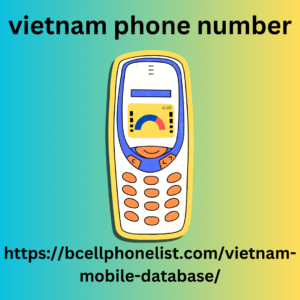Exploring its Significance and Applications
In the ever-evolving landscape of telecommunication, the 855 phone code stands out as a unique identifier, serving a diverse range of communication needs. Whether you're a business seeking to establish a toll-free presence or an individual navigating the complexities of modern phone systems, understanding the intricacies of the 855 code can be invaluable. In this comprehensive article, we will delve into the origins, characteristics, and practical implications of the 855 phone code, empowering you to make the most of this versatile communication tool.
The Birth and Evolution of the 855 Phone Code
To fully appreciate the significance of the 855 code, it is vietnam phone number essential to explore its historical context and the factors that have shaped its development over time.
The Introduction of the 855 Code
The 855 phone code was introduced in the early 2000s as part of the ongoing efforts to expand the North American Numbering Plan, a system designed to accommodate the growing demand for telephone numbers across the United States and Canada. Unlike traditional geographic-based area codes, the 855 code was designated as a toll-free service code, intended to complement the existing 800 and 888 toll-free options.
Expansion and Adaptation
Since its inception, the 855 code has undergone various expansions and adaptations to keep pace with the evolving communication landscape. As the demand for toll-free services continued to rise, the 855 code became an increasingly valuable resource, leading to the subsequent introduction of additional toll-free area codes, such as 866 and 877.

Understanding the Characteristics and Applications of the 855 Phone Code
The 855 phone code holds distinct features that differentiate it from traditional geographic-based codes, and these characteristics have significant implications for individuals and businesses alike.
Toll-Free Calling
One of the primary characteristics of the 855 phone code is its designation as a toll-free service. This means that calls made to 855 numbers are typically free of charge for the caller, as the cost of the call is borne by the party receiving the call, often a business or organization.
Accessibility and Convenience
The toll-free nature of the 855 code makes it an attractive option for businesses and organizations seeking to enhance their accessibility and customer service. By offering a toll-free number, these entities can remove potential barriers to communication, making it easier for clients, customers, or the general public to reach them.
Versatility and Applications
The 855 phone code can be utilized in a wide range of applications, from customer service and technical support to sales and marketing efforts. Businesses and organizations can leverage the 855 code to establish a professional and reliable point of contact, fostering stronger relationships with their target audience.
Navigating the Practical Considerations of the 855 Phone Code
When incorporating the 855 phone code into your communication strategies, it is essential to be mindful of certain practical considerations and best practices.
Caller Identification and Transparency
When receiving a call from an 855 number, it is crucial to recognize the toll-free nature of the code and the potential implications it may have. Providing clear and transparent information about the purpose of the call can help to build trust and facilitate productive interactions.
Cost Management and Optimization
While the 855 code offers the benefit of toll-free calling, businesses must carefully manage the associated costs to ensure the most efficient use of their communication resources. Regularly reviewing call volumes, usage patterns, and pricing structures can help to optimize the investment in 855 phone services.
By understanding the nuances of the 855 phone code, individuals and businesses can leverage its unique features to enhance their communication strategies, improve customer experiences, and drive meaningful engagement with their target audiences.